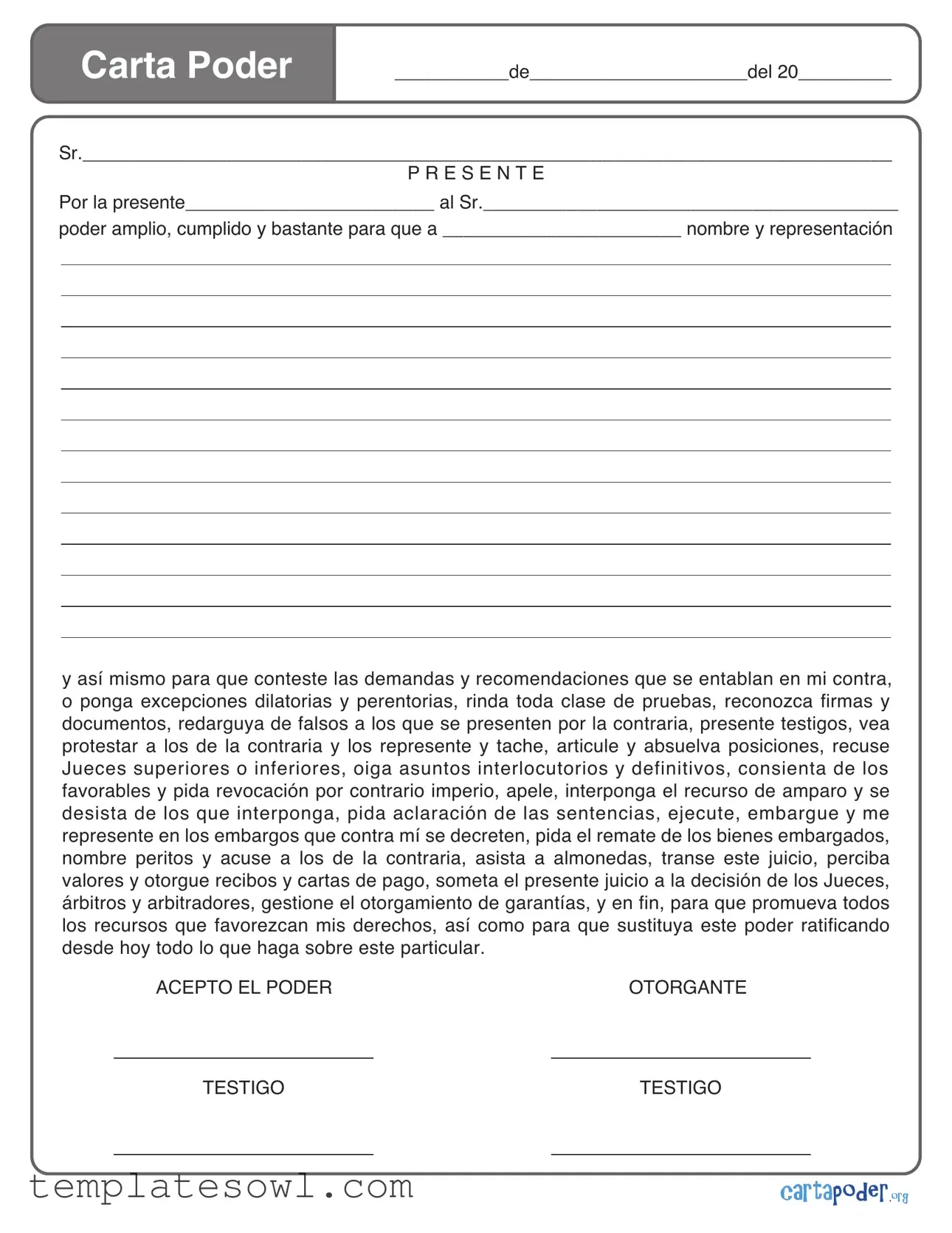When filling out the Carta Poder form, individuals often make several common mistakes that can undermine the effectiveness of the document. Understanding these pitfalls can help ensure that the form is completed accurately and serves its intended purpose. Here are ten key mistakes to avoid.
One of the most frequent errors is failing to use clear and complete information for the principal—the person granting the authority. It is crucial to include the full name, correct identification details, and address. Omitting any of these elements can create ambiguity and may lead to disputes regarding the identity of the principal.
Another common mistake occurs when individuals leave out the full name of the agent, the person receiving the power. Just like with the principal's information, clarity is vital. An incomplete name or title can result in the wrong person being granted authority, which could have serious consequences.
Many people also fail to specify the scope of the authority being granted. The Carta Poder can be tailored for specific tasks or given as a general power of attorney. Not clarifying whether the power is limited or broad can lead to unintentional overreach or insufficient authority, which may hinder the agent's ability to act on behalf of the principal.
In addition, incorrect completion of the date field is a common oversight. It’s essential to ensure that the date reflects the intended authorization period. Missing or inaccurate dates can invalidate the powers represented in the document, creating complications later on.
People sometimes overlook the necessity for witness signatures. Witnesses play a crucial role in verifying the authenticity of the document. Without appropriate signatures, the Carta Poder may not hold up under review or legal scrutiny. It is vital to ensure that witnesses are present and sign the document at the time of execution.
Another mistake is neglecting to include details about any limitations or conditions related to the power granted. Specific situations may require restrictions to protect the principal’s interests. Failing to outline these could enable the agent to act outside the principal’s intentions.
Less frequently, individuals may forget to have the document notarized, when required. Notarization can provide an additional layer of validation and prevent potential challenges regarding the authenticity of the signatures or the document itself.
Sometimes, there is confusion regarding the language used in the form. It is important to ensure that the terminology is not only legally correct but also easy to understand. Overly complex language can obscure the intentions of either party and lead to misunderstandings.
People may also neglect to make copies of the completed Carta Poder. Retaining a record is important not just for the principal and agent but also for any third parties who may need to verify that the power was granted. A lack of copies can complicate future transactions or inquiries.
Lastly, individuals sometimes ignore the importance of reviewing the completed document before submission. Errors such as typos or miswritten names can easily arise. Taking a moment to go over each section can prevent unnecessary complications and ensure the Carta Poder will function as intended.
Avoiding these mistakes can greatly enhance the effectiveness of the Carta Poder, ensuring clarity and protection for all parties involved. Proper attention to detail can lead to smoother processes in legal and personal transactions alike.

